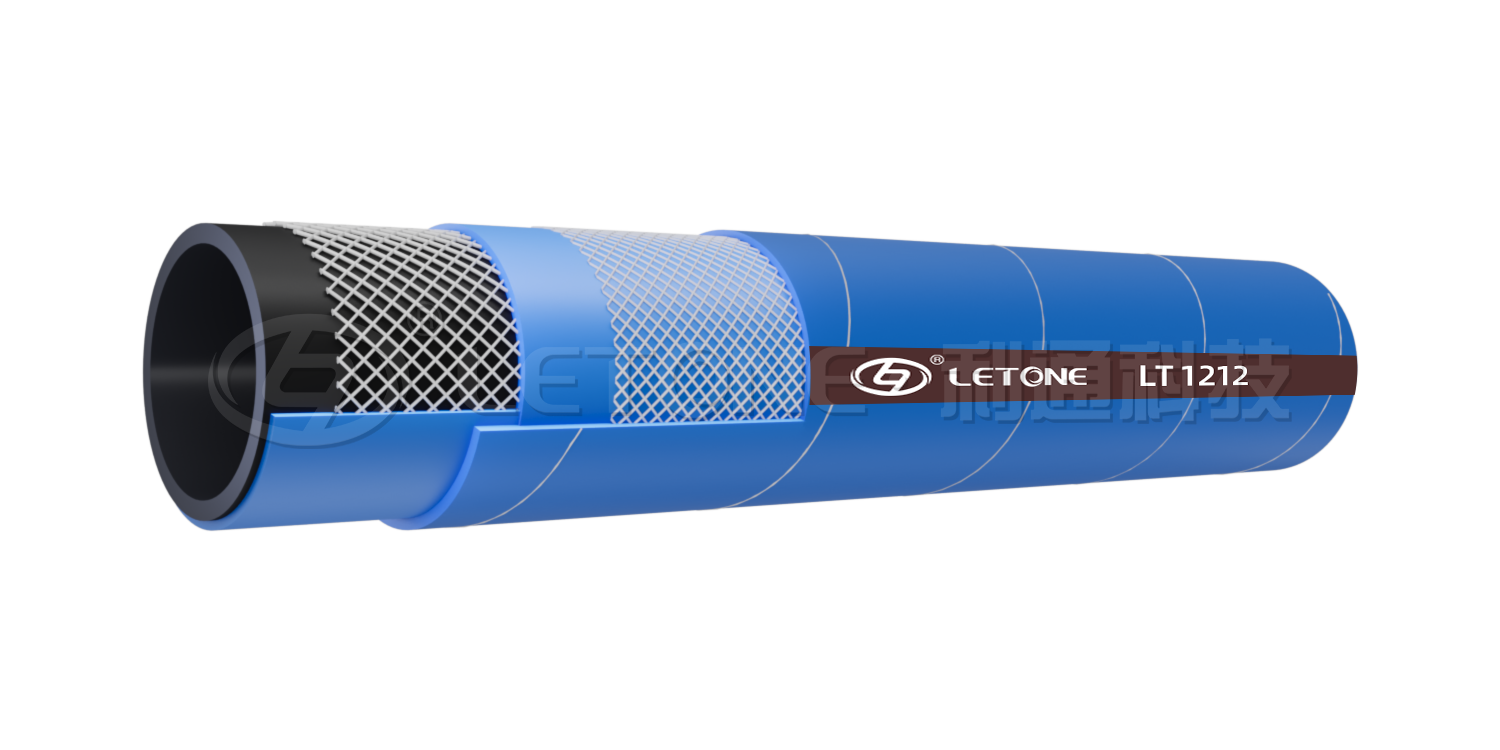
Research on the Corrosion Resistance of UPE Chemical Hose
1、 Technical characteristics and structural advantages of UPE chemical hose
The UPE (ultra-high molecular weight polyethylene) chemical hose adopts a multi-layer composite structure, with the inner layer made of UPE material with a molecular weight of over 1.5 million. It has a unique molecular chain structure, which makes its wear resistance 4-7 times that of ordinary steel pipes. The reinforcement layer is combined with multiple layers of high-strength fiber weaving and built-in spiral steel wire to ensure the stability of the pipe body under high pressure conditions, and the blasting pressure can reach more than 5 times the working pressure. The outer layer is made of EPDM rubber or corrugated wear-resistant coating, which maintains the flexibility of the pipe body in the temperature range of -40 ℃ to 120 ℃ and has the ability to resist UV aging. Typical specifications range from an inner diameter of 13mm to 102mm, and the wall thickness can reach 6-12mm depending on the characteristics of the medium.
In terms of structural design, UPE chemical hoses effectively prevent static electricity accumulation by embedding anti-static copper wires. The inner wall smoothness is below Ra0.2 μ m, with a friction coefficient of only 0.07, reducing fluid resistance by 60%. Experimental data shows that when transporting sulfuric acid with a concentration of 75%, the annual corrosion rate of UPE hoses is less than 0.05mm, and their service life is 3-5 times longer than traditional rubber hoses.
2、 Classification and application scenarios of industrial hoses
Industrial hoses can be divided into three categories based on their materials: rubber, plastic, and metal. Among them, UPE chemical hoses belong to the high-performance plastic hose branch. The following are the core application scenarios and technical adaptation solutions for UPE chemical hoses:
1. Transportation of corrosive media in the chemical industry
Typical scenario:
Acid solution transportation
Organic solvent treatment
Extraction of corrosive gases
Technical adaptation:
UPE lining rubber composite layer design, resistant to strong corrosive media such as 98% sulfuric acid, 30% hydrochloric acid, etc
Anti static copper wire embedding to prevent electrostatic sparks in corrosive gas environments
2. Clean transportation in the food and pharmaceutical industry
Typical scenario:
Food grade liquid transportation (such as milk, juice, beer)
Pharmaceutical raw material transportation
Chemical transportation
Technical adaptation:
UPE material that complies with FDA 21 CFR 177.1520 standard
Transparent visualization design for real-time monitoring of media status
Inner wall mirror polishing (Ra ≤ 0.1 μ m) reduces the risk of microbial adhesion
3. Transportation of high wear media in mining and dredging engineering
Typical scenario:
Slurry transportation (such as iron ore, copper ore slurry)
Tailings discharge (with a solid content of 30% -60%)
River dredging and mud pumping
Technical adaptation:
Ceramic particles/silicon carbide coating composite inner wall, with a 200% increase in wear resistance
High strength steel wire winding reinforcement layer, capable of withstanding the impact pressure of slurry
Case: A certain iron ore project uses UPE hoses to transport slurry with a particle size of 15mm, with a service life of 1000 hours
4. Engineering waste disposal
Typical scenario:
Transportation of waste incineration fly ash slurry
waste water treatment
sludge dewatering system
Technical adaptation:
Anti scaling inner wall design reduces dirt deposition
The temperature resistance range is extended to -40 ℃ to 150 ℃, suitable for different working conditions
3、 Key indicators for selection and maintenance
1. Parameter matching principle
Media compatibility: When transporting organic solvents, composite hoses lined with fluororubber should be used, while pure chemical media can use pure UPE lined products.
Pressure adaptation: The working pressure of the system should be lower than 80% of the nominal pressure of the hose. For example, for a hose with a nominal pressure of 2.5 MPa, the actual operating pressure should not exceed 2.0 MPa.
Temperature range: The standard applicable temperature for UPE hoses is -40 ℃ to 120 ℃, and special formulations can be extended to -269 ℃ to 150 ℃.
2. Installation and maintenance specifications
Bending radius: The minimum bending radius of DN50 hose shall not be less than 250mm, otherwise it may cause fatigue fracture of the reinforcement layer.
Joint connection: It is recommended to use clamp or flange connection. The crimping joint should ensure that the stripping length meets the standard to avoid damaging the reinforcement layer.
Regular testing: Conduct a water pressure test every 3 months, with a test pressure of 1.5 times the working pressure; Perform ultrasonic testing every 6 months to check the corrosion of the steel wire layer.